
Results Setup For CFD
Before you press the run button for your Computational Fluid Dynamics (CFD) simulation you should configure your results to provide feedback on the simulation's progress. In most modern CFD systems, such as Caedium, you can use co-processing to update your results simultaneously while your CFD simulation runs. Assuming you have the option to co-process your CFD results then here are some helpful tips on how to proceed.
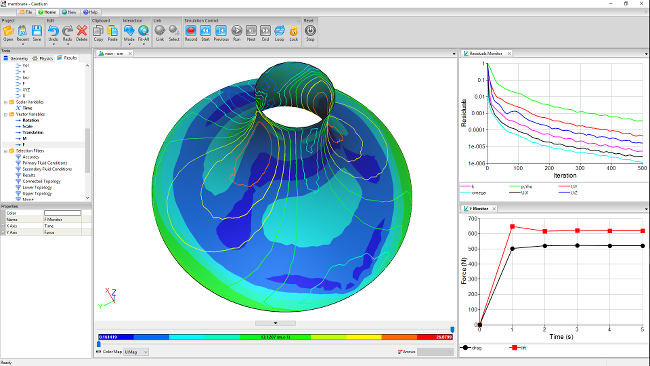 Caedium CFD Simulation Complete After Co-Processing Results
Caedium CFD Simulation Complete After Co-Processing Results
Residual Monitor
For every CFD simulation you should always create a residual monitor to provide feedback and diagnostics on the state of each iterative solver in your simulation. For example, there can be up to 6 or more coupled solvers in a turbulent heat transfer simulation that all have to work in harmony to produce meaningful results.
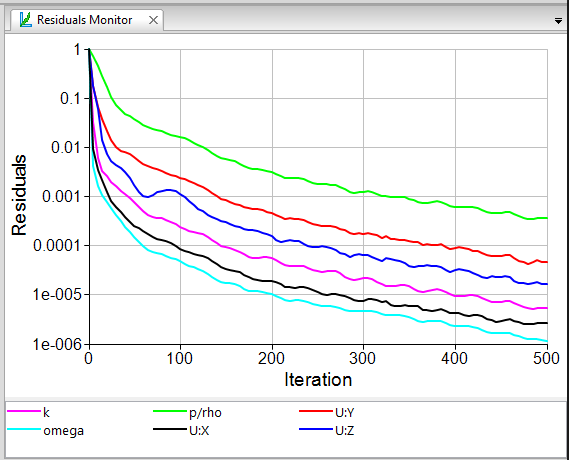 Residual Monitor
Residual Monitor
The residual monitor shows whether the solvers are converging, i.e., the errors are reducing with increasing iterations. As a rule of thumb you want to see all the residuals reduce by 3 orders of magnitude before you consider your simulation to be converged. For a steady state CFD simulation if your residuals do not meet this criteria your results are likely to be meaningless and are not to be trusted. For an unsteady (transient) simulation the absolute values of the residuals are unimportant, but you want to see a relatively smooth variation with increasing iterations.
Physical Quantity Monitors
Often the objective in performing a CFD simulation is to determine the value of a physical characteristic for a certain configuration of geometry and flow parameters. In the case of an external aerodynamic simulation you might be interested in the drag or lift, and for an internal flow you might be interested in the pressure loss.
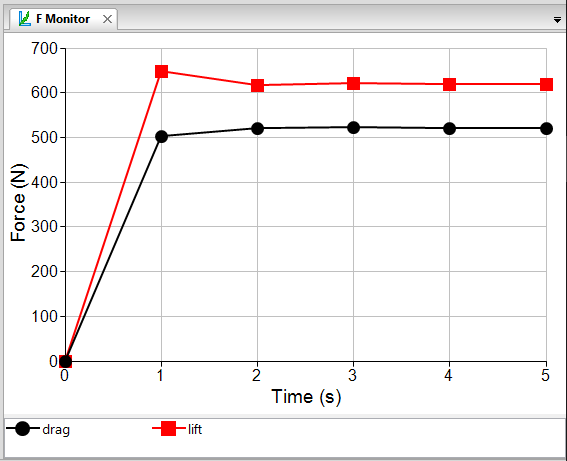 Force Monitor
Force Monitor
Physical flow characteristics are also ideal quantities to monitor to better determine your CFD simulation's convergence. Where convergence means leveling off to a single value. While a residual monitor provides some confidence in the convergence of your simulation, monitoring physical characteristics (e.g., lift/drag, pressure loss) provides an extra level of rigor to assess the validity of your results.
Visualization During Simulation
To take advantage of co-processing, it is best practice to set up the 3D visualization and 2D plots you want to see updated during your CFD simulation prior to running it. Typical field quantities to view are velocity magnitude and pressure as surface contours. While you still have available the full rich pallet of 3D visualization techniques (e.g., streamlines, vectors, iso-surfaces) with co-processing, it is better to use less intensive visualization to avoid taking resources away from the running simulation.
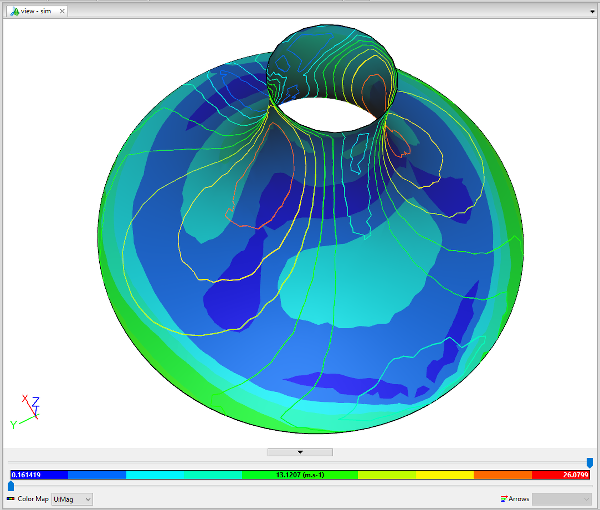 Velocity Magnitude Contours
Velocity Magnitude Contours
Where co-processing really shines is with unsteady CFD simulations where you can capture and compile complex visualizations into animations while simultaneously running the simulation. This avoids the massive data management task to compile an animation after the simulation completes, which is typical of traditional post-processing.
Simulation Complete
Once your have your final converged CFD simulation, you can embrace the full spectrum of advanced 3D visualization techniques. That means feel free to go wild with vectors, streamlines, and iso-surfaces.
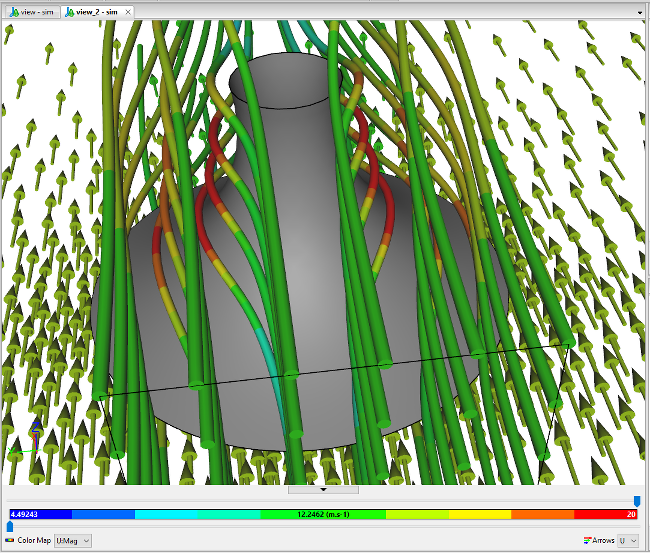 Streamlines and Vectors
Streamlines and Vectors
Recent blog posts
- CFD Simulates Distant Past
- Background on the Caedium v6.0 Release
- Long-Necked Dinosaurs Succumb To CFD
- CFD Provides Insight Into Mystery Fossils
- Wind Turbine Design According to Insects
- Runners Discover Drafting
- Wind Tunnel and CFD Reveal Best Cycling Tuck
- Active Aerodynamics on the Lamborghini Huracán Performante
- Fluidic Logic
- Stonehenge Vortex Revealed as April Fools' Day Distortion Field
